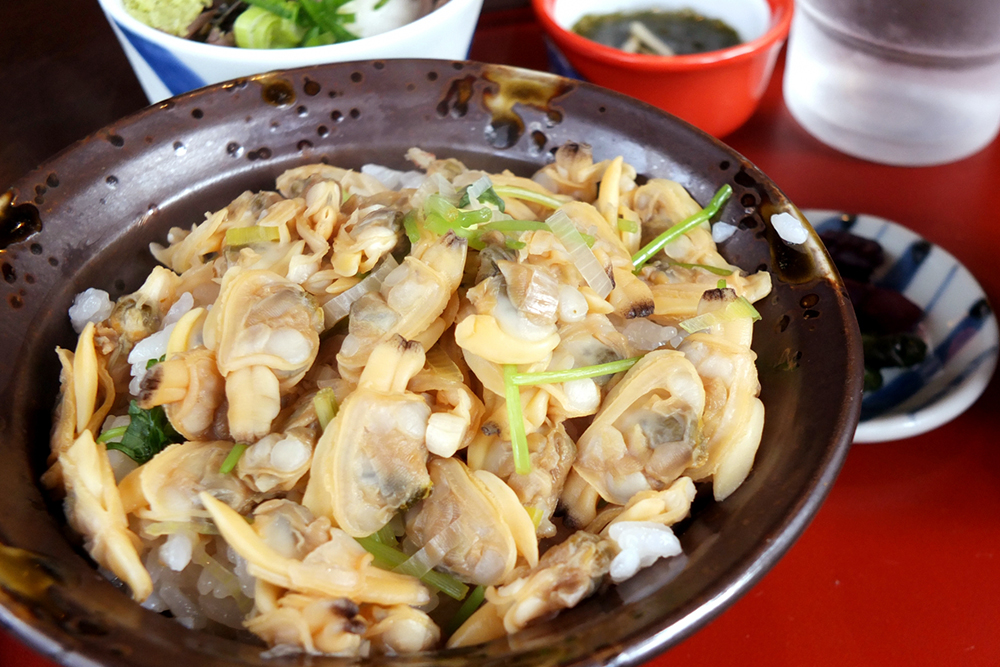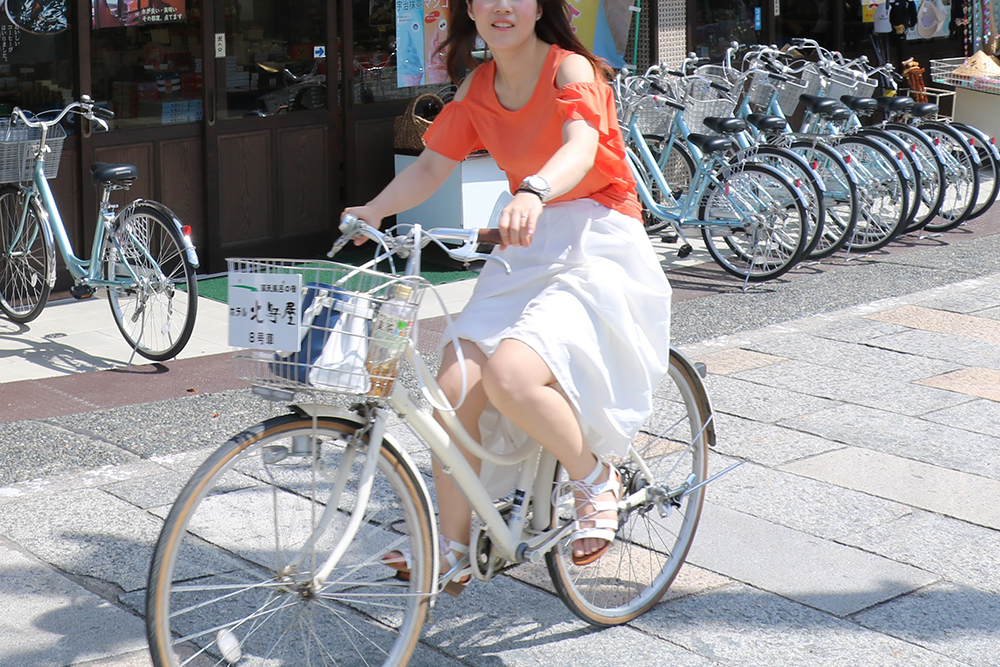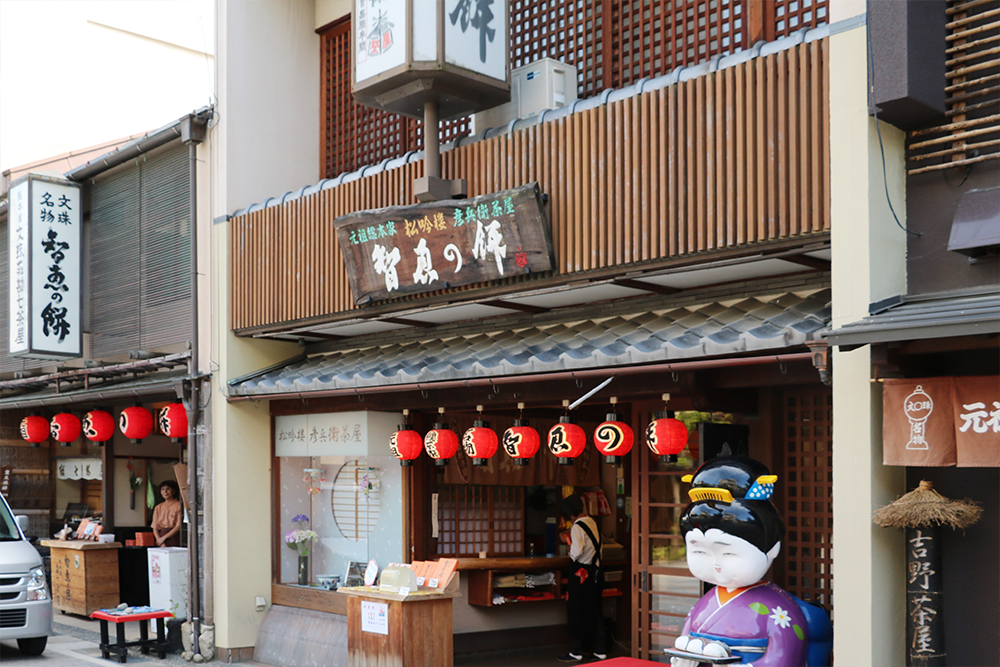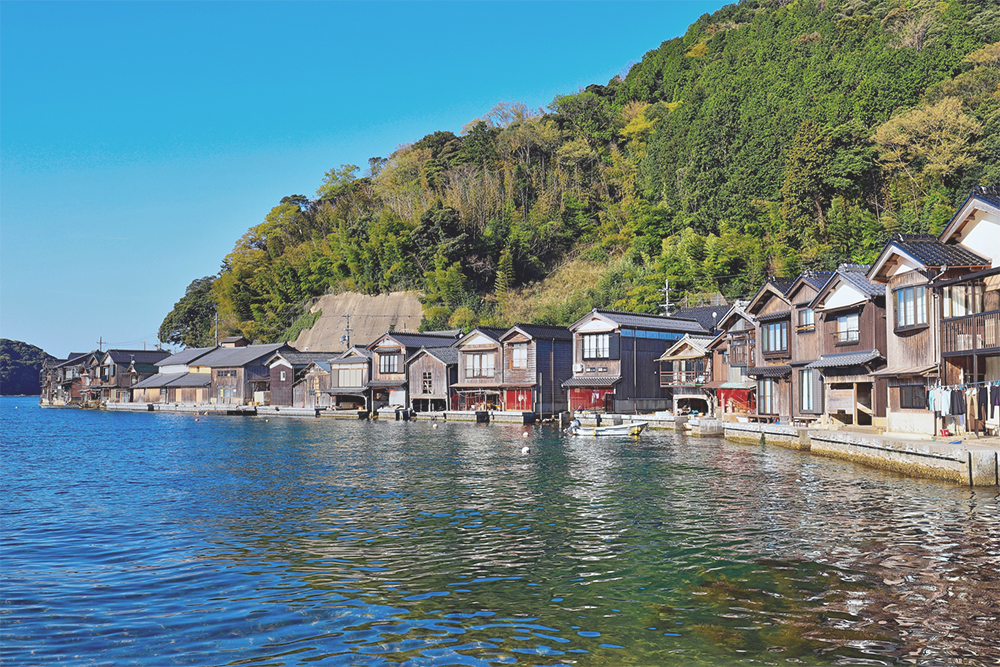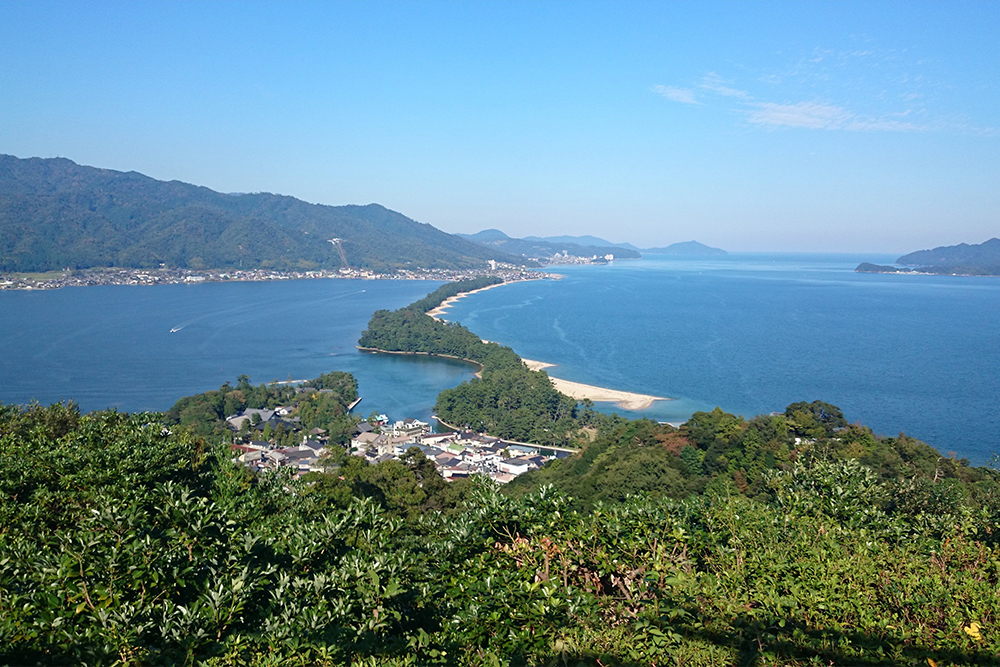Chion-ji Temple
Located about a five-minute walk from Amanohashidate, Chion-ji Temple is one of the Three Great Monju Temples of Japan, alongside Abe Monju-in in Sakurai (Nara) and Kameoka Monju in Takahata (Yamagata).
It enshrines Monju Bosatsu, the deity of wisdom known from the proverb “Three heads together make the wisdom of Monju,” and is famous nationwide as a place where students pray for success in exams and academic achievement.
According to the legend Kusetobe Engi, preserved at Chion-ji, the deities Izanagi and Izanami summoned Monju Bosatsu from Mount Wutai in China to pacify an evil dragon that had caused havoc in this area during the creation of Japan. Monju transformed the dragon into a benevolent one, bringing peace to the land.
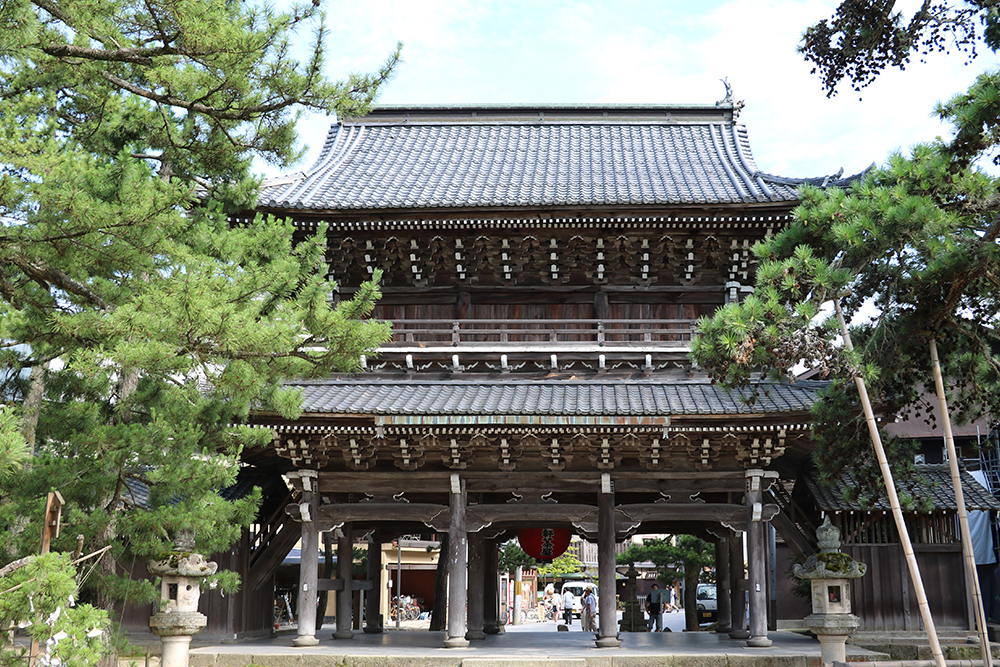
Walking along Chaya-dōri, you will reach the grand Sanmon Gate, marking the entrance to Chion-ji.
It is said that when rebuilding the gate, Empress Gosakuramachi bestowed gold for its construction, earning it the nickname “Kogane-kaku”—the Golden Pavilion.
Built in an authentic Zen Buddhist architectural style, it stands as the largest gate in the Tango region. Construction took seven years, and the ridgepole was raised in September of 1767.
Remarkably, the project required 8,780 carpenters, giving a sense of its immense scale and craftsmanship.
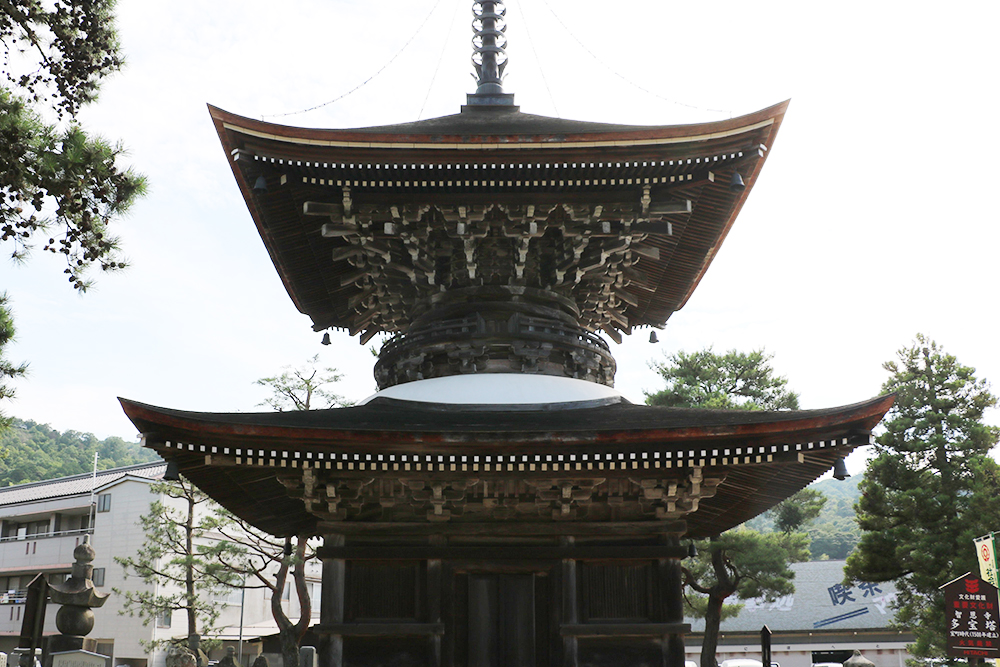
Passing through the gate, the first thing you’ll see on the left is the Tahōtō Pagoda.
It was reportedly built by the lord of Fuchū Castle in gratitude for his recovery from illness.
Constructed in 1500, it is the only surviving Muromachi-period structure in the Tango region and is designated as an Important Cultural Property.
Facing the pagoda are three life-size stone statues, also depicted in Sesshū’s famous “Amanohashidate Scroll.”
Based on their form—with a treasure jewel in the left hand and a staff in the right—they are believed to represent Jizō Bosatsu.
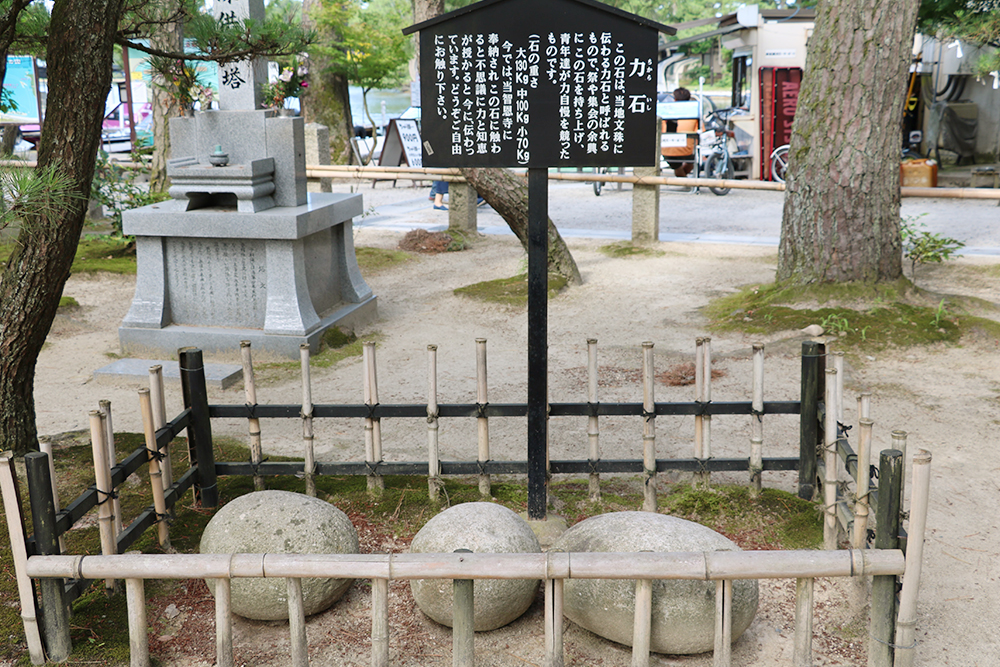
Another highlight is the trio of “Strength Stones,” large weights that young men once lifted during festivals to test their strength.
The stones weigh an astonishing 130 kg, 100 kg, and 70 kg.
It is said that simply touching these stones grants you strength and wisdom, so even if you cannot lift them, be sure to place your hand on them before you leave.
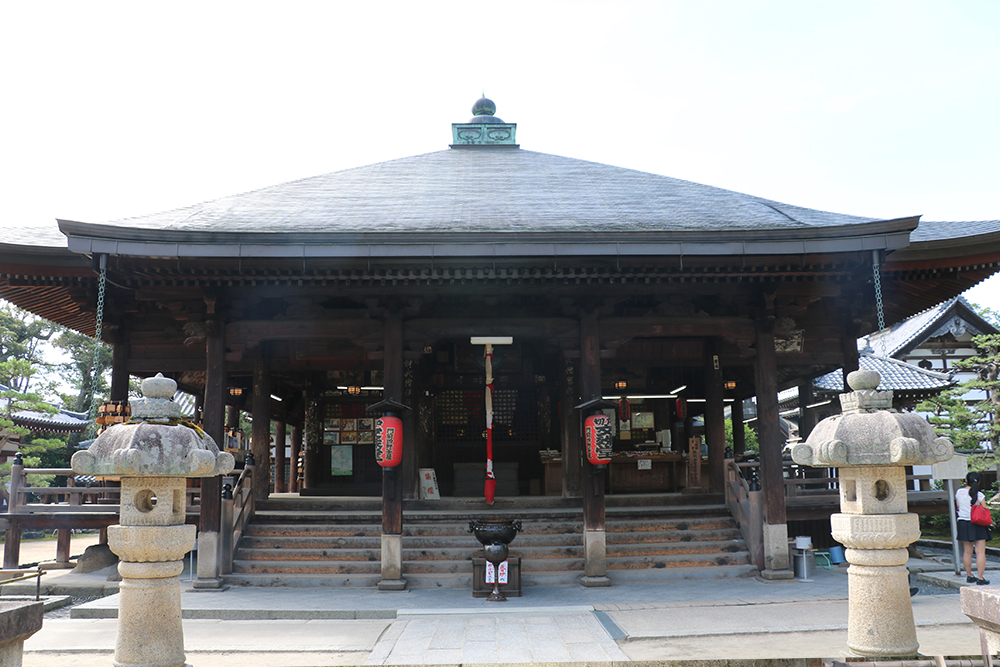
Continuing toward the main hall, you will find the Iron Bath Basin (temizu-bachi) used for purification.
Originally crafted as a large bathing tub during the Kamakura period, it once served in the temple’s bathhouse for monks.
After purifying yourself here, it’s time to visit the temple’s most important site—the Monju Hall (Monju-dō).
Monju Bosatsu, the deity of wisdom, is enshrined within the copper-roofed hall.
Because the statue is a hidden Buddha, it is not usually displayed to the public.
However, for those eager to see it, the hall opens its doors only five days a year:
January 1–3, January 10 (Tōka-Ebisu), and July 24 (Deshio Matsuri).
After paying respects at the main hall, don’t miss the Bell Tower Gate beside it.
Built in 1722 by a merchant from Miyazu who had lost two children in succession, it is called Gyōunkaku, named after their posthumous Buddhist names.
Its distinctive style, with turtle-shaped supports on both sides and an outward-projecting lower level, is known as the Ryūgū-mon Style, reminiscent of the Dragon Palace from Japanese folklore.
Continuing toward the sightseeing boat pier, you will encounter the sacred tree “Bunjū” on your right.
Its name echoes “Monju,” and the character 文 (bun) can mean “to adorn,” symbolizing the idea that “those who adorn their lives with wisdom will be blessed.”
The tree’s resin is imbued with spiritual energy and is used to make high-quality incense—truly a fitting
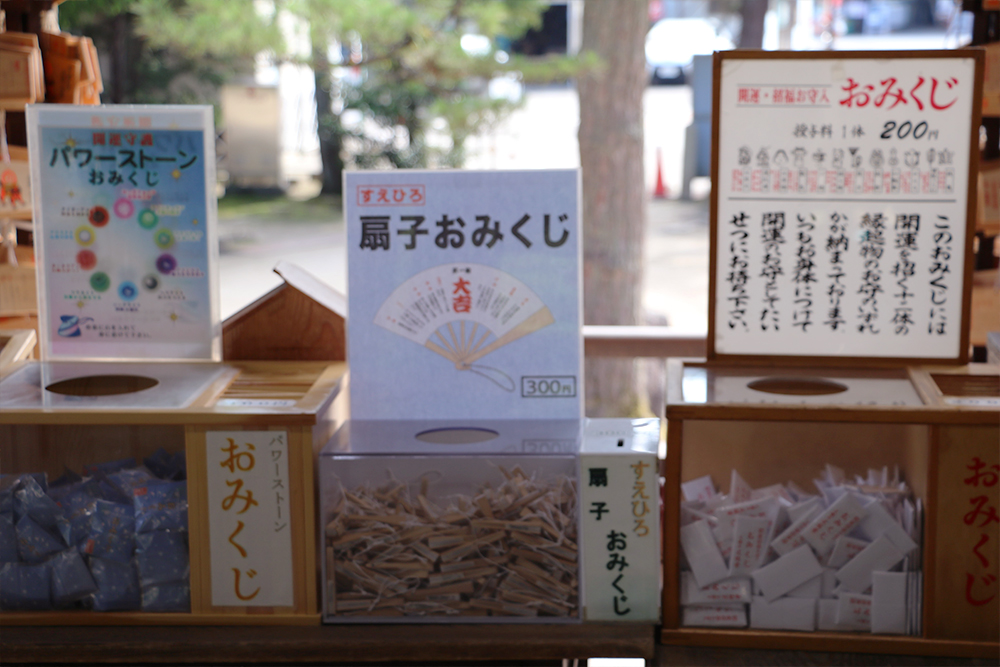
Before you finish your visit, be sure to draw an omikuji fortune.
Among the many types available, the most striking is the Suehiro Sensu Omikuji—folding fan fortunes.
Fans tied around the grounds look like blossoming flowers!
When you open the fan, your fortune is revealed. Although you may be tempted to take it home as a keepsake, tradition says to tie it to a pine tree on the temple grounds.
After your prayer, why not try your luck and add your own “fan flower” to the grove?
Finally, don’t miss the “Ring of Wisdom Lantern” (Chie-no-wa Tōrō), located near the boat pier north of Chion-ji.
Once built to pray for safe voyages, it is now known for the legend:
“Pass through the Ring of Wisdom three times, and you will be granted the wisdom of Monju.”
But passing through with your whole body is not allowed!
So how will you make it through the ring?
Gather three people, and perhaps you’ll figure it out—after all, “Three heads together make the wisdom of Monju.”
- Contact information
- Chion-ji Temple
- TEL
- 0772-22-2553
- location
- 466 Monju, Miyazu City, Kyoto Prefecture
- Distance from facility
- 22 minutes by car

